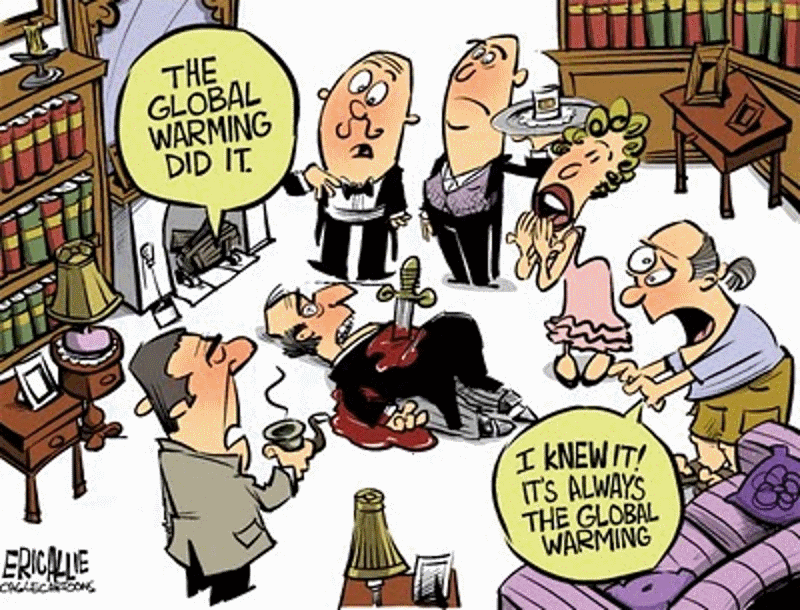"The summer has been cold. That has been said many times this year. But the summer has actually been more 'lacking in sun' and 'full of rain'.In the above I was waiting for DMI to finally come up with the average temperature so that I could judge how much below normal it was and if that was even the case. Instead DMI comes up with a story by saying that the temperature means nothing and how it really isn't that special as it only was two years since Denmark had a cooler temperature. In the end DMI doesn't mention what the average temperature is for the season (something they otherwise do).
Denmark has, in other words, had an average summer in 2017 - not least when compared to what we have been used to in the last decade.
But how far back do we have to go to find a worse summer? Climatologist Mikael Scharling has looked into it.
The Temperature says nothing
"When we look at the temperature - and we have had to hear a lot about it - then it is only two years ago, that we had an even colder summer. This year the average was 15,4°C. In 2015 it was down to 15,2°C".
The average temperature doesn't necessarily say much of interest about the summer. Two completely different versions of the season can produce the same result.
"A summer with few clouds typically has colder nights and warmer days. A cloudy summer on the contrary lukewarm nights and cooler days. Both parts can result in for instance 15,4°C, but the two summers will be experienced quite differently", explains Mikael Scharling."
Smelling a rat, I decided to find the answer by going to the pre-season article, where the averages are given for rain, amount of sun hours and temperature.
There it showed that during the summers 1961-1990, the average temperature was 15,2°C.
During the period of (2006-2015) the average temperature was 16,1°C.
DMI has reverted back to the 30 year period from 1961-1990 as their base line. They say here: that this period is, according to the UN's international meteorological agency WMO, the recommended climate normal. But is that really true? Here is what WMO says about baselines:
"The World Meteorological Congress, WMO's top decision-making body on Standards, approved a resolution that WMO will update the climatological Standard Normals for operational purposes every 10 years and will use 1981-2010 as the current base period. However, it will retain 1961-1990 as the historical base period for the sake of supporting long-term climate change assessments."So it appears as if DMI is not being totally honest here, as the baseline of 1961-1990 is used for long-term climate change assessment, in other words for research. Using the period of 1961-1990 which was a cold period, has the advantage that most temperatures today will appear to be above the average and thus sustain the illusion of global warming. It appears as if it is more a matter of trying to 'hide the decline'. In the article linked above where DMI explains about normals, they say that the next normal will be the period from 1991-2020. Why not the period from 1981-2010 which is recognised by the WMO and other countries that have adopted including NOAA?
Compared to the period 2006-2015, then the temperature for this year's summer in Denmark was 0.7° C below normal. That in itself is interesting. What is even more interesting is that the summer of 2015 also was cold with as much as 0.9°C below normal. That is newsworthy or so one would think. Two out of the last three summers well below average. Is that a new trend?
When one looks at the report that DMI made about the summer 2016 then they gave much more information, including the average temperature, rainfall and amount of sun. They even mentioned how many tropical nights Denmark had (24 hour periods where the temperature the whole time was above 20° Celsius. Perhaps the answer lies in the fact that no such nights occurred in the summer of 2017.They also made no bones about that summer being exactly on the average for the last decade at 16,1°, and used right through the period 2006-2015 as the average with which they judged the summer.
So despite DMI characterising the summer as being average, it was far from it. A 82 year old farmer told me that it was atypical and it was:
- Temperature: 15.4° compared to the average of 16.1° (2006-2015) and 15.2° (1960-1991)
- Rainfall: 268mm compared to the average of 236 mm (2006-2015) and 188 mm (1960-1991)
- Hours of sunshine: 565 hours compared to 669 hours (2006-2015) and 591 (1960-1991)




Reader Comments
to our Newsletter